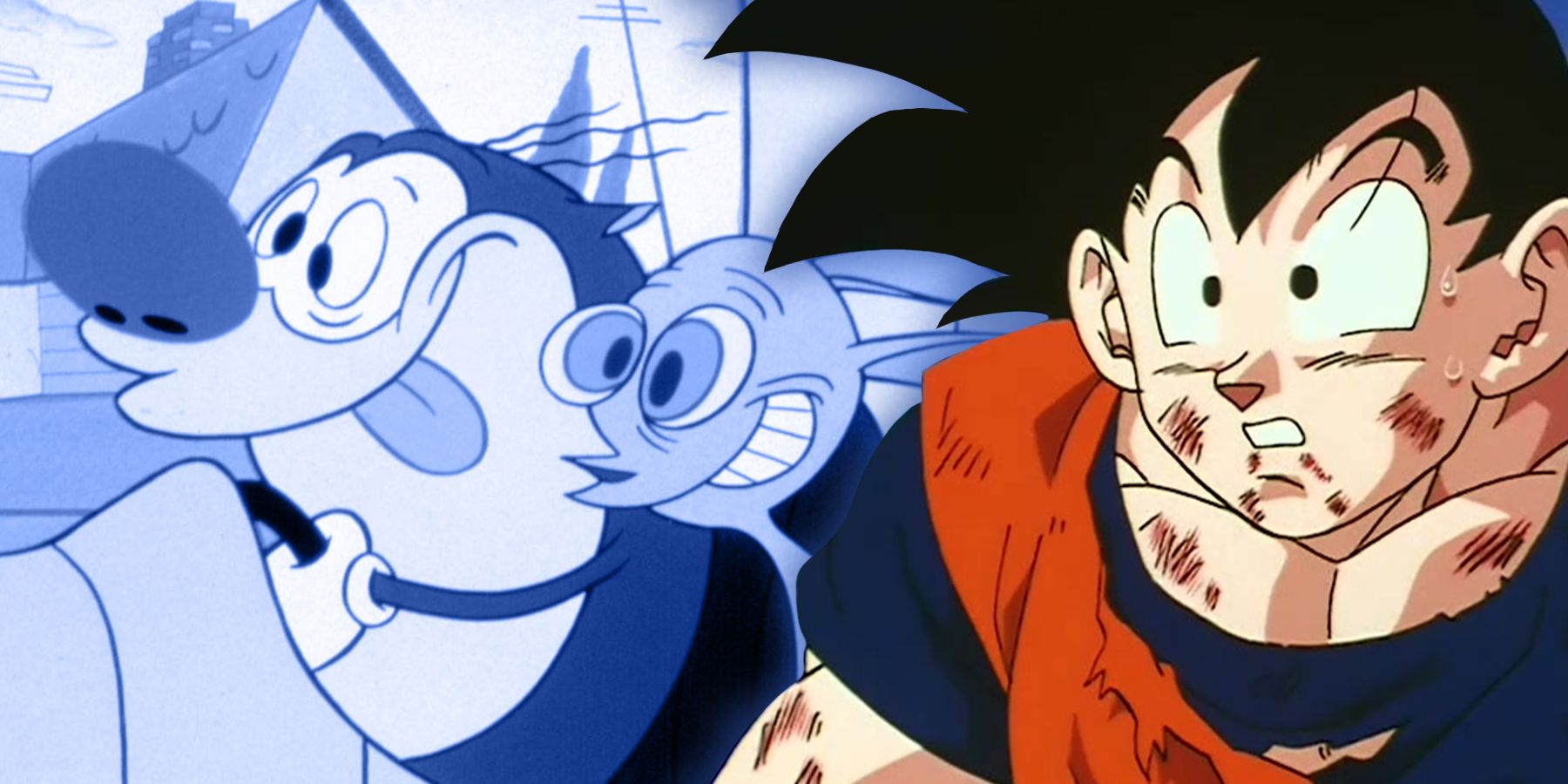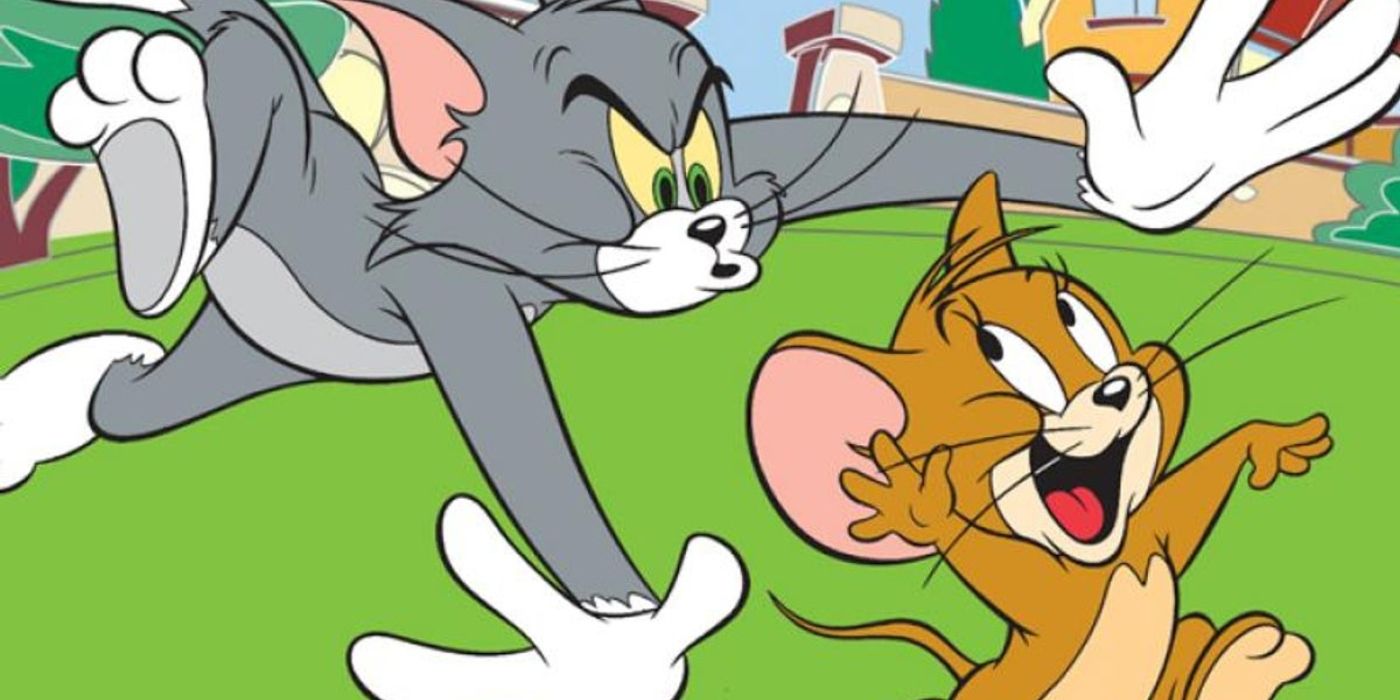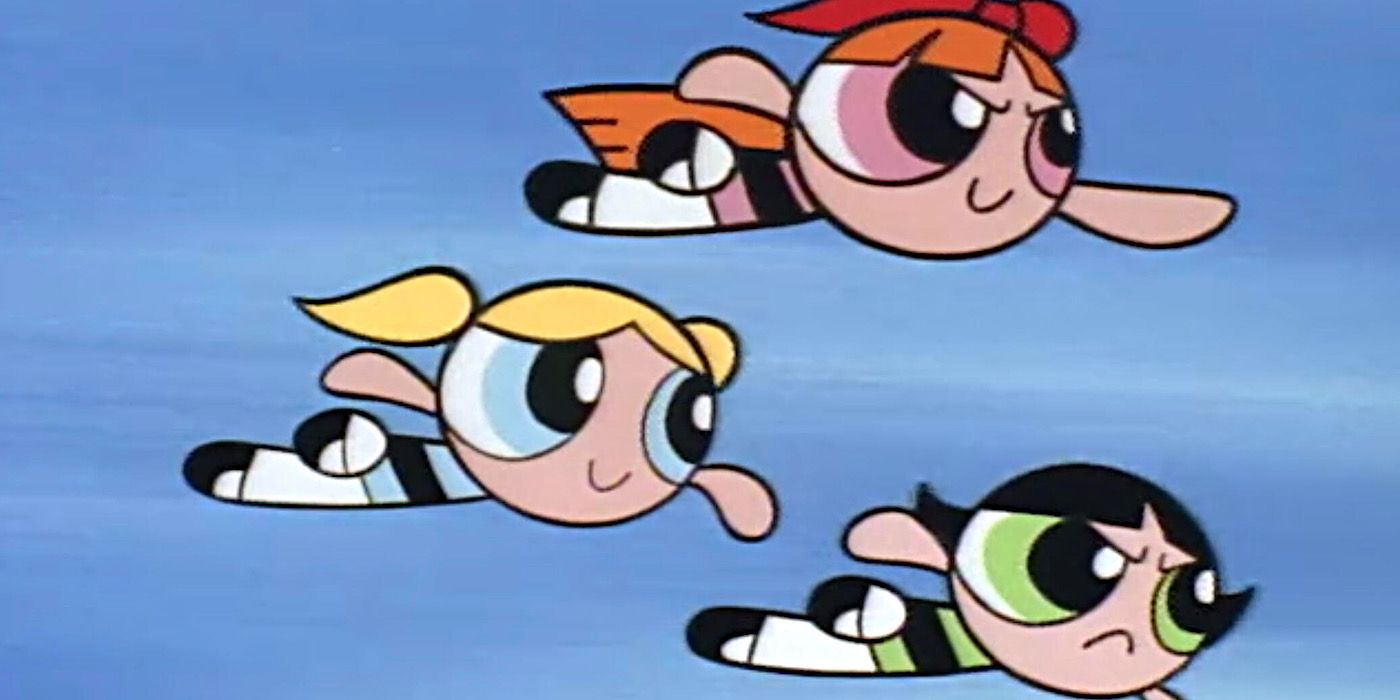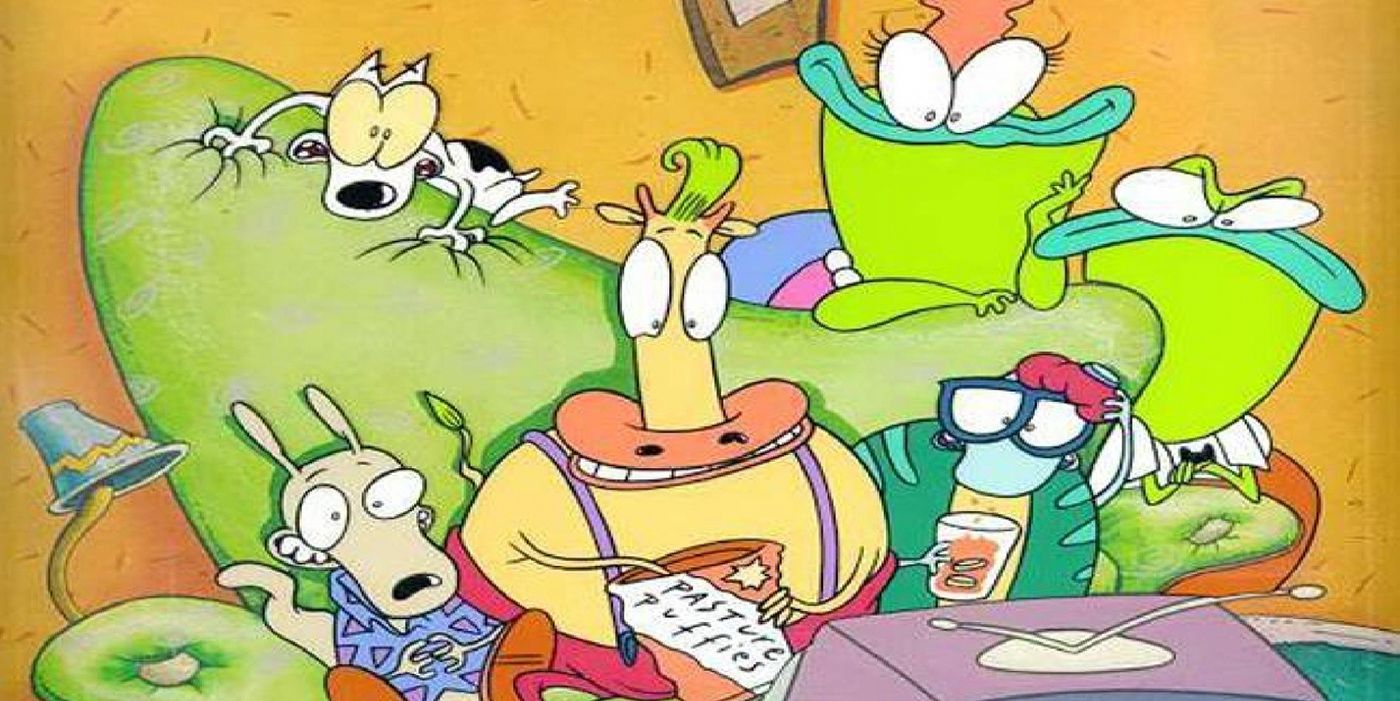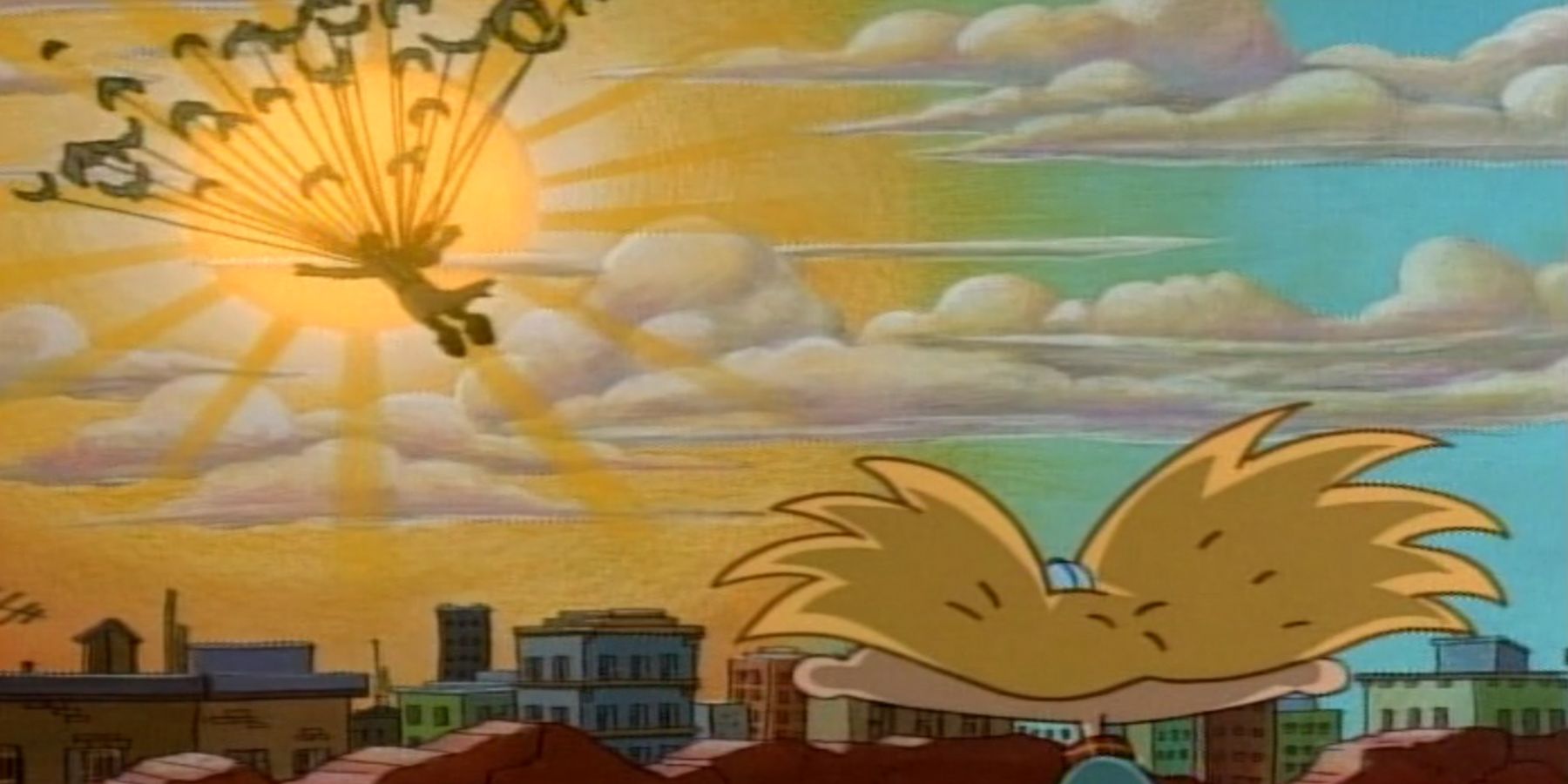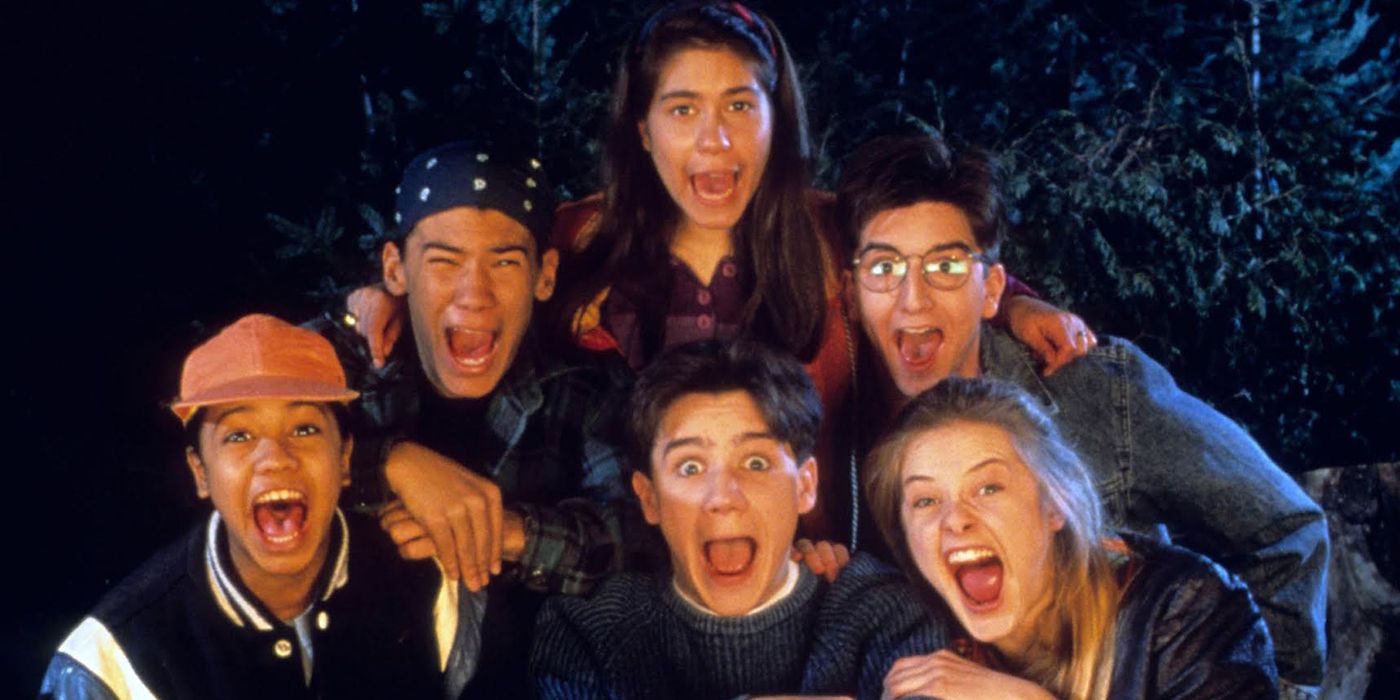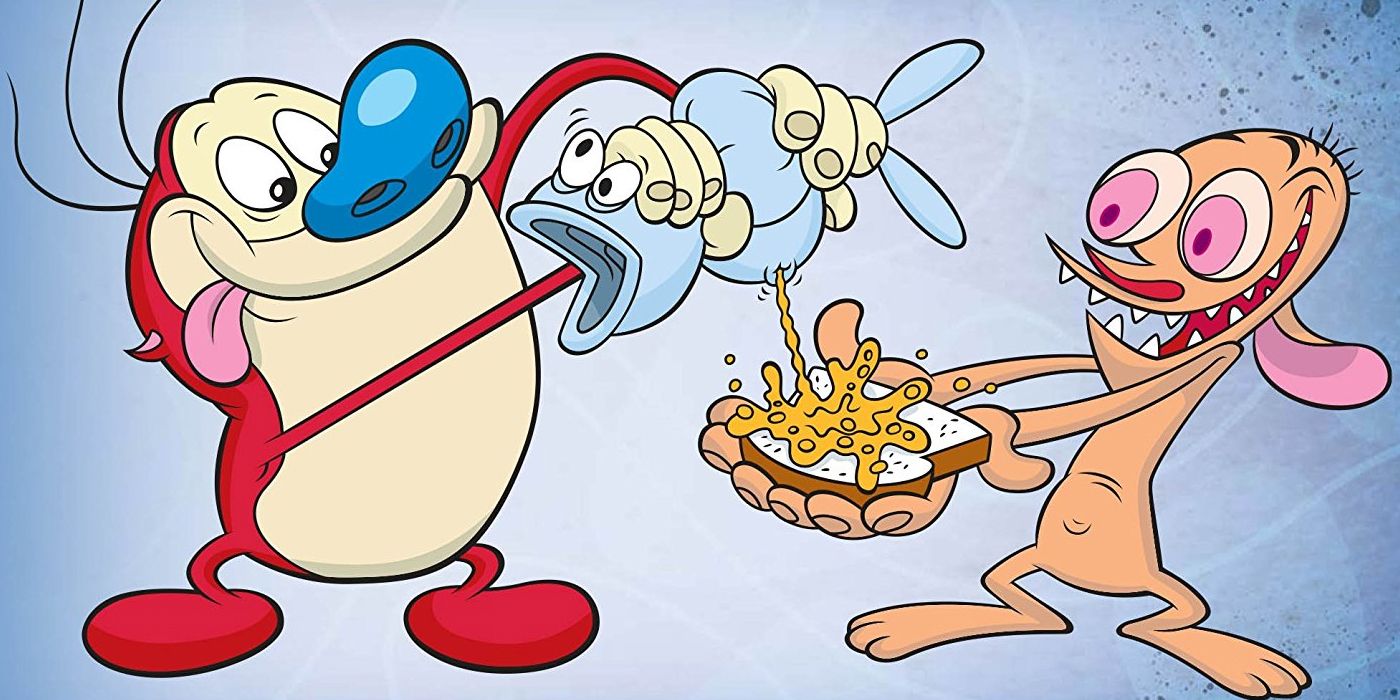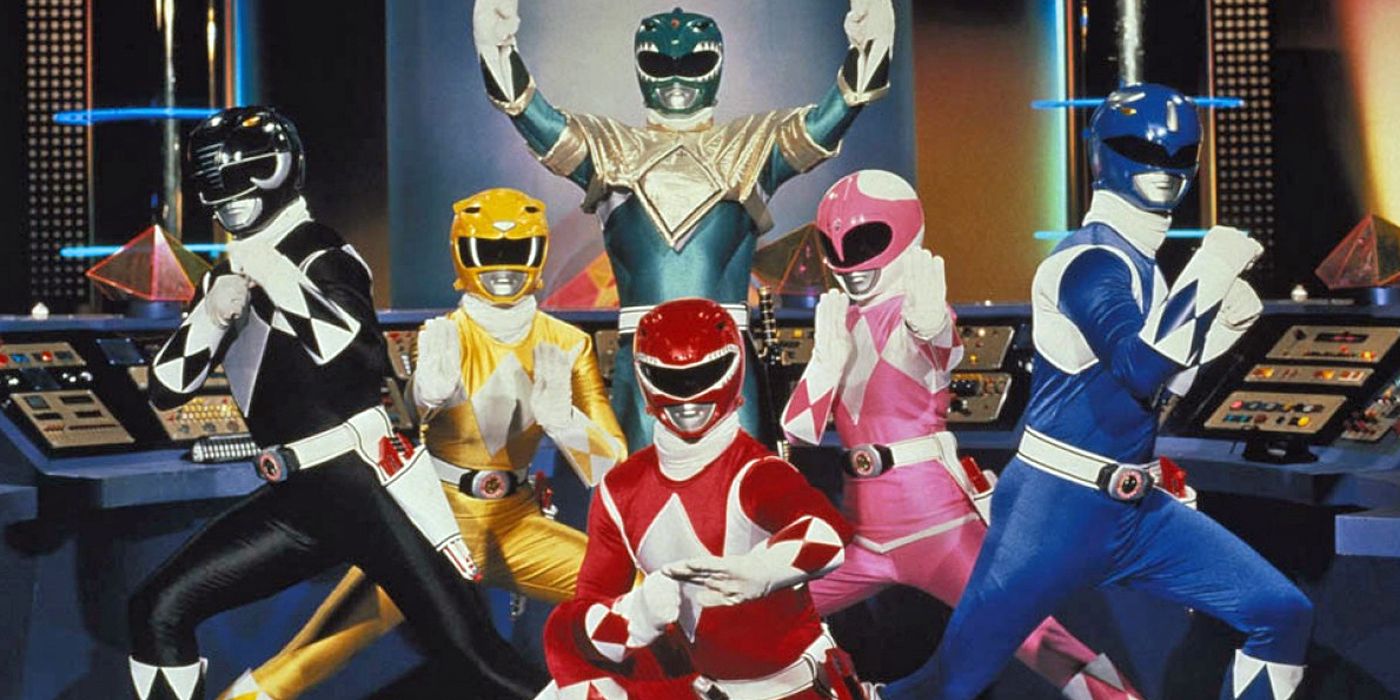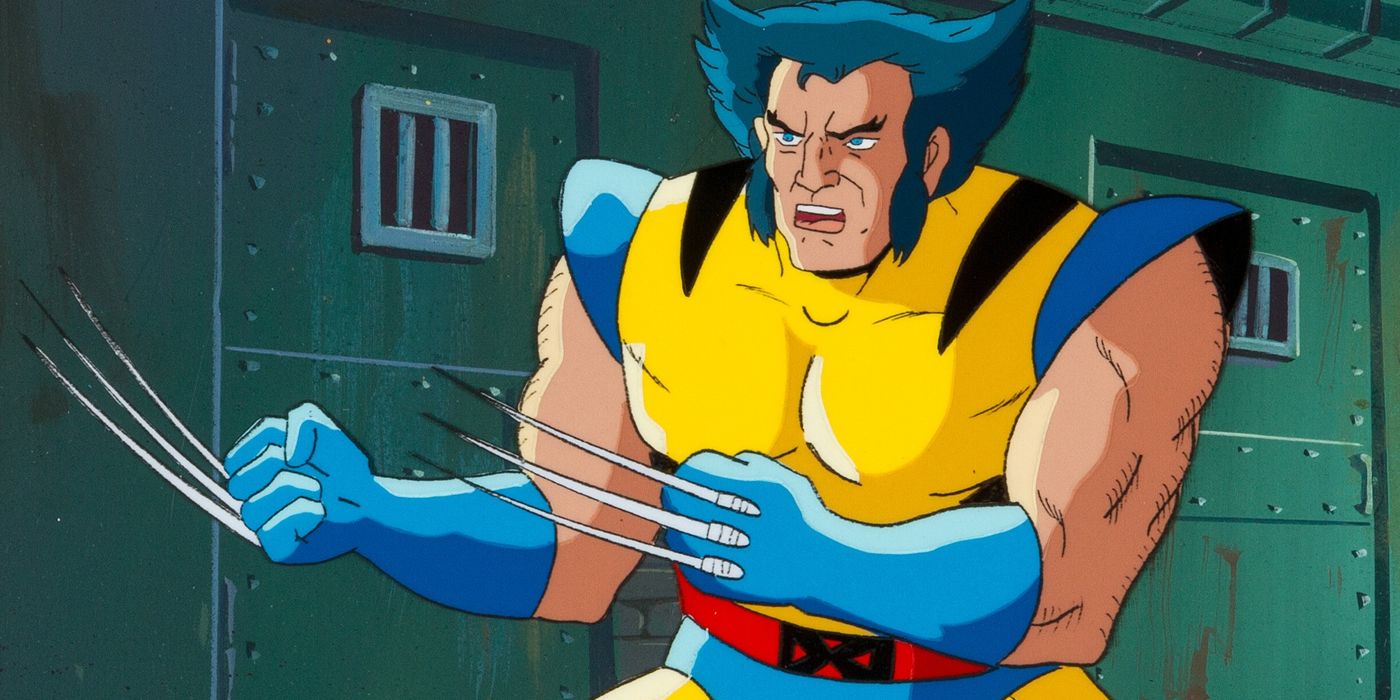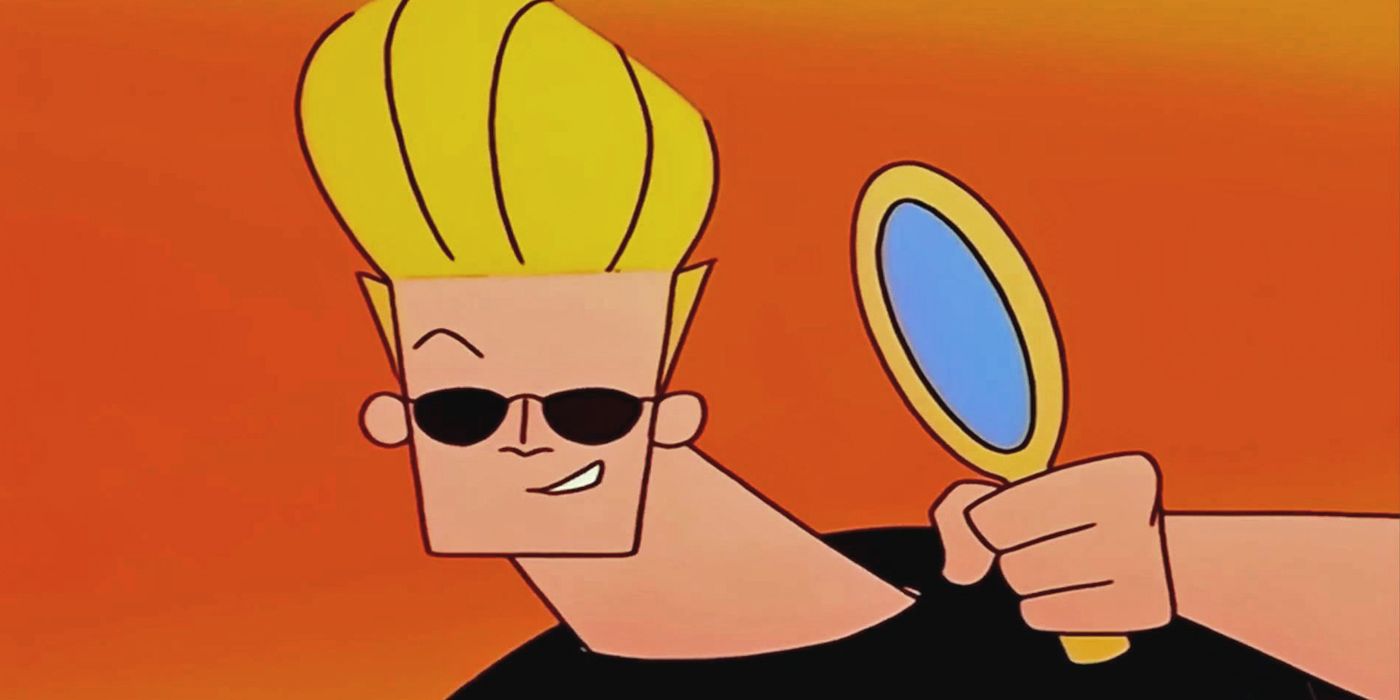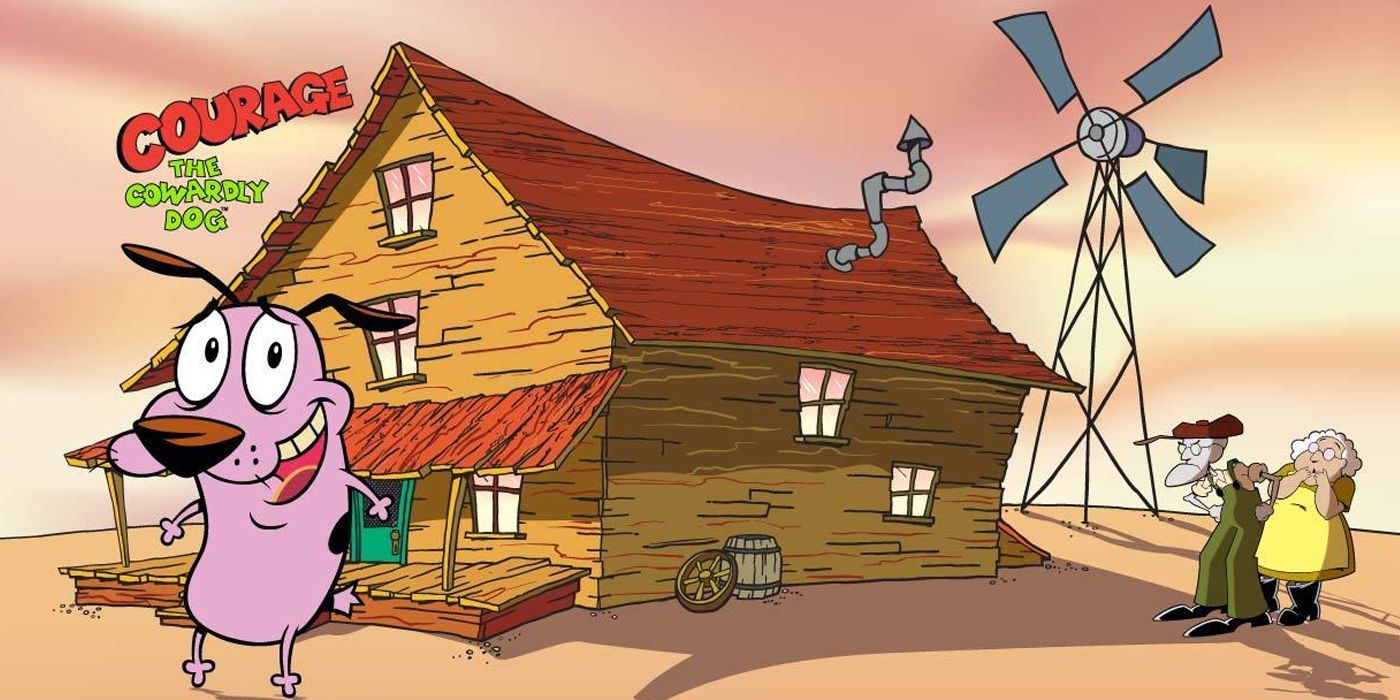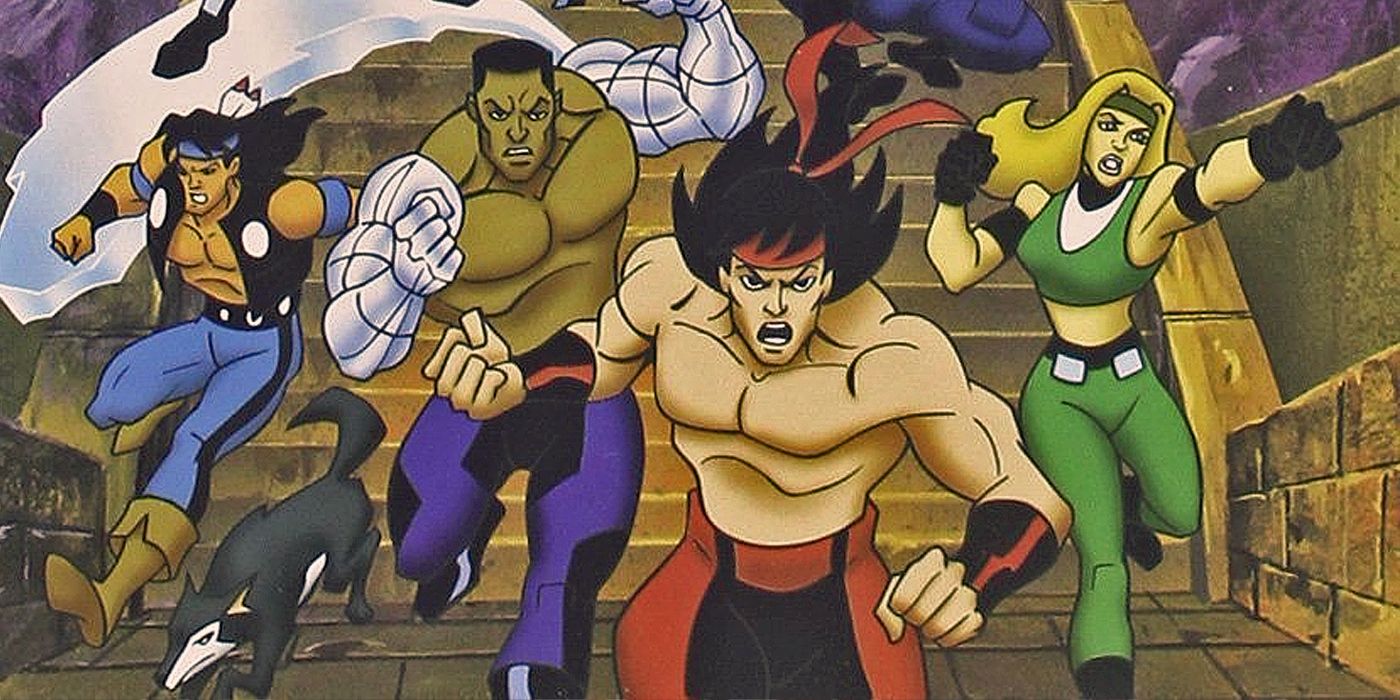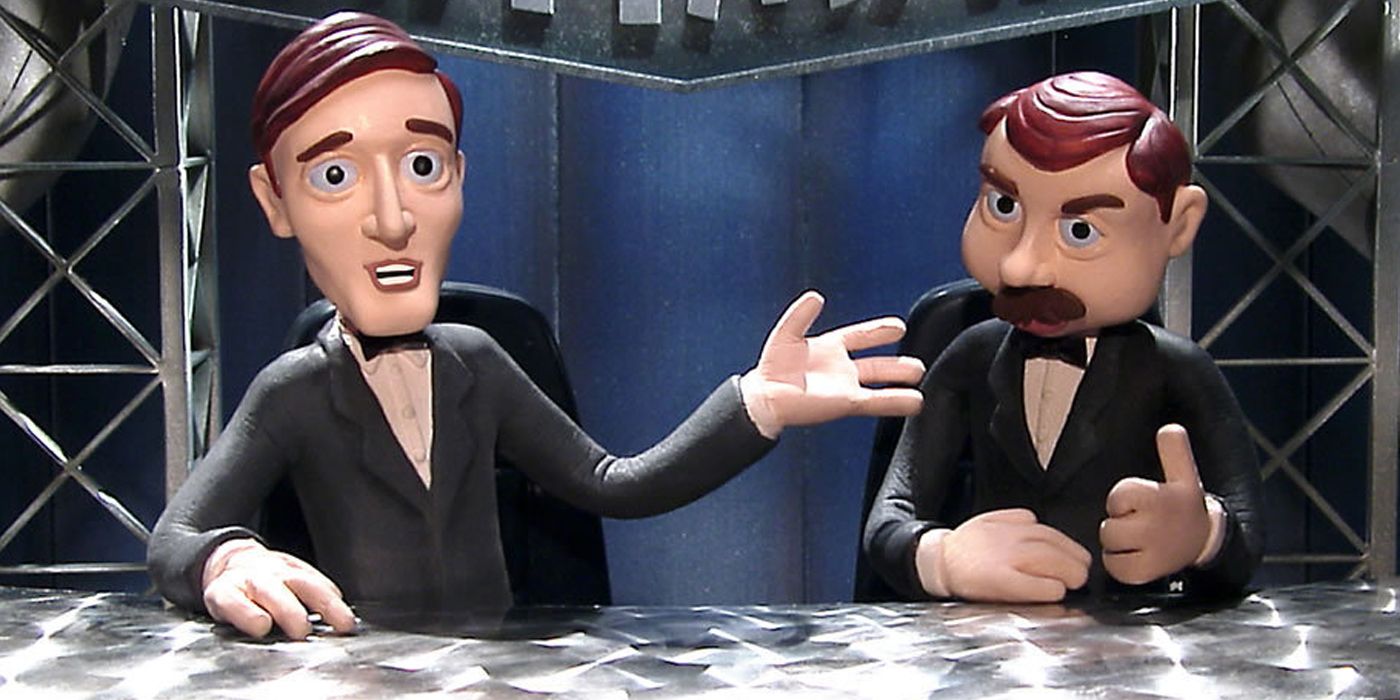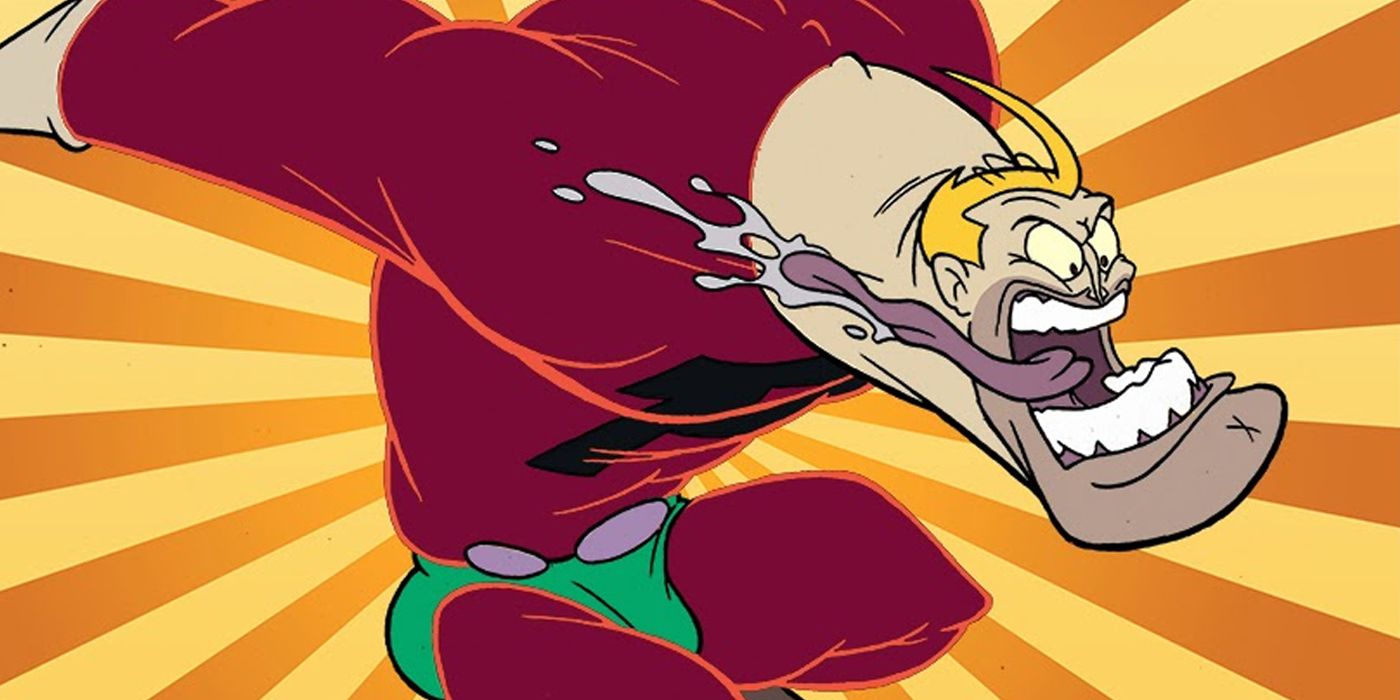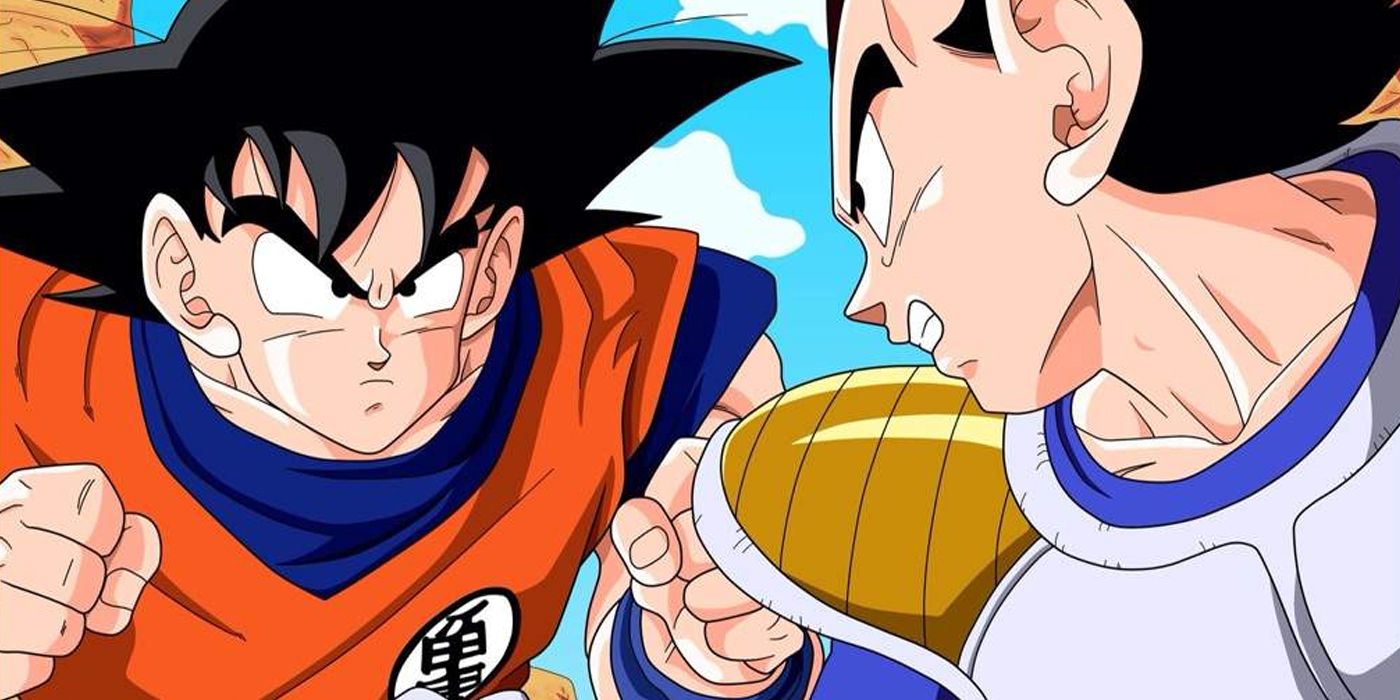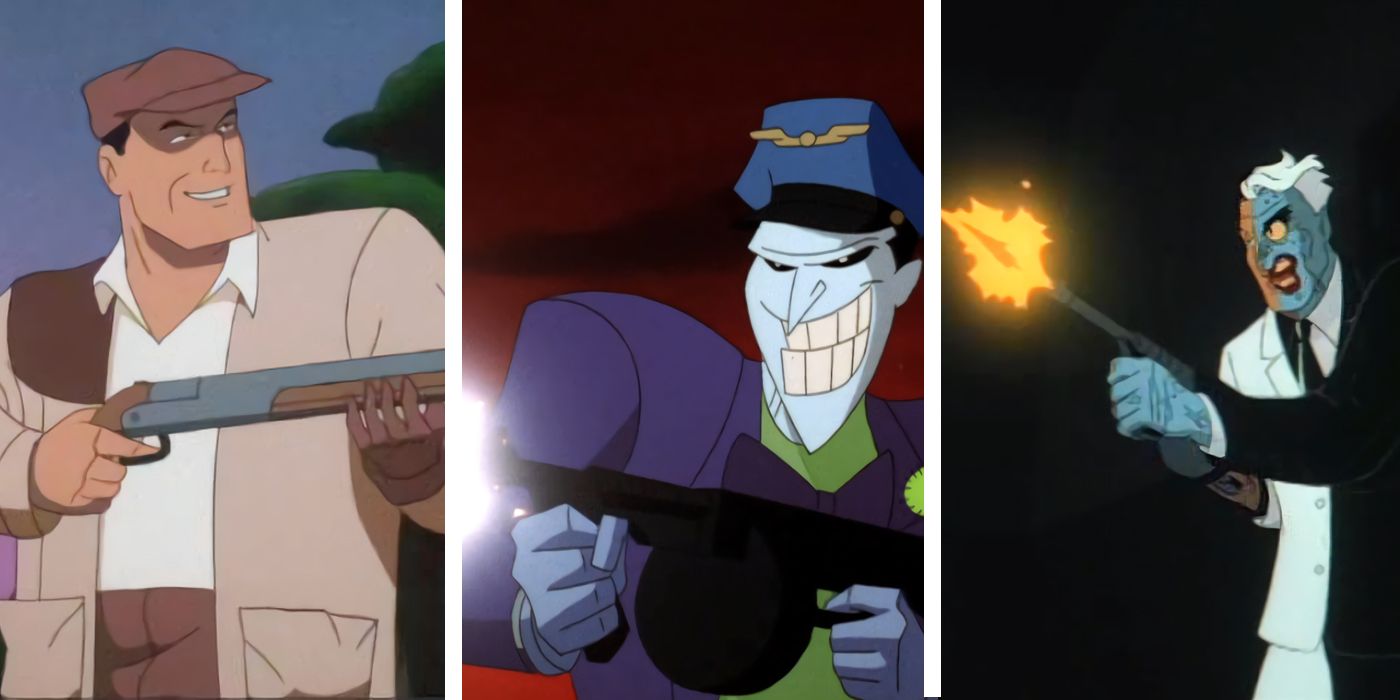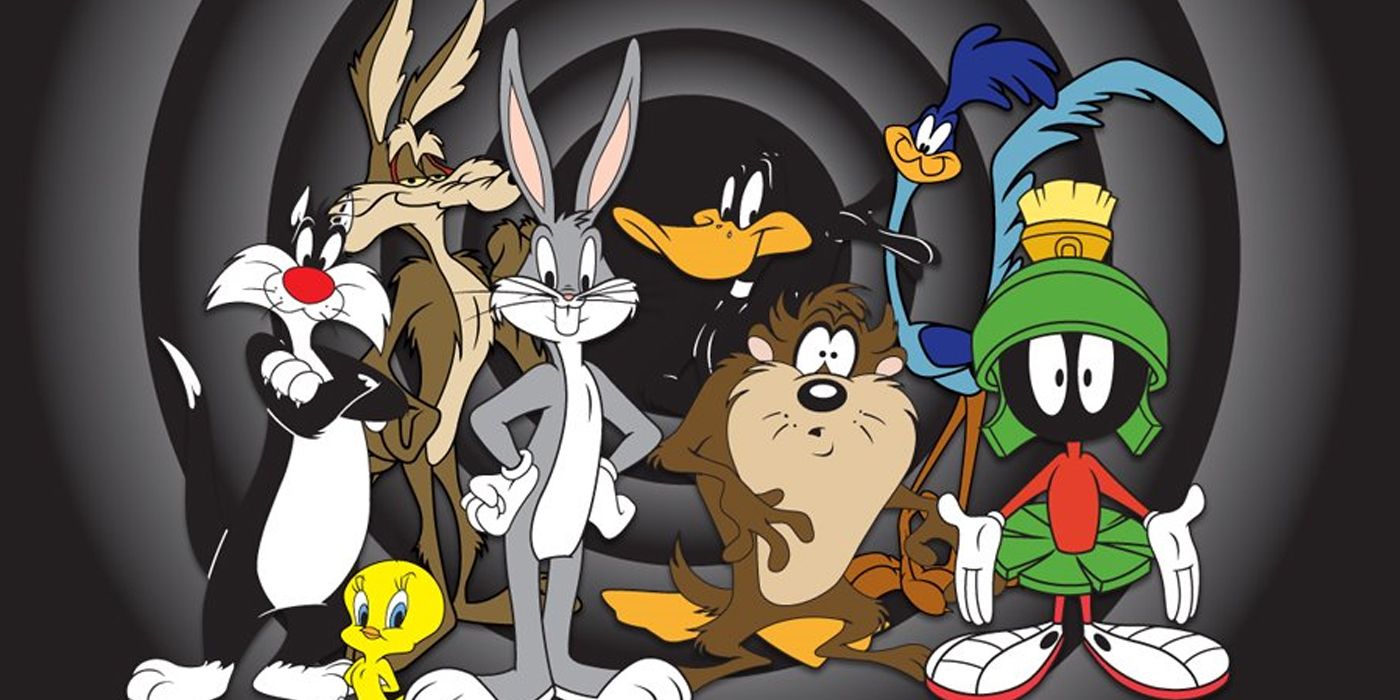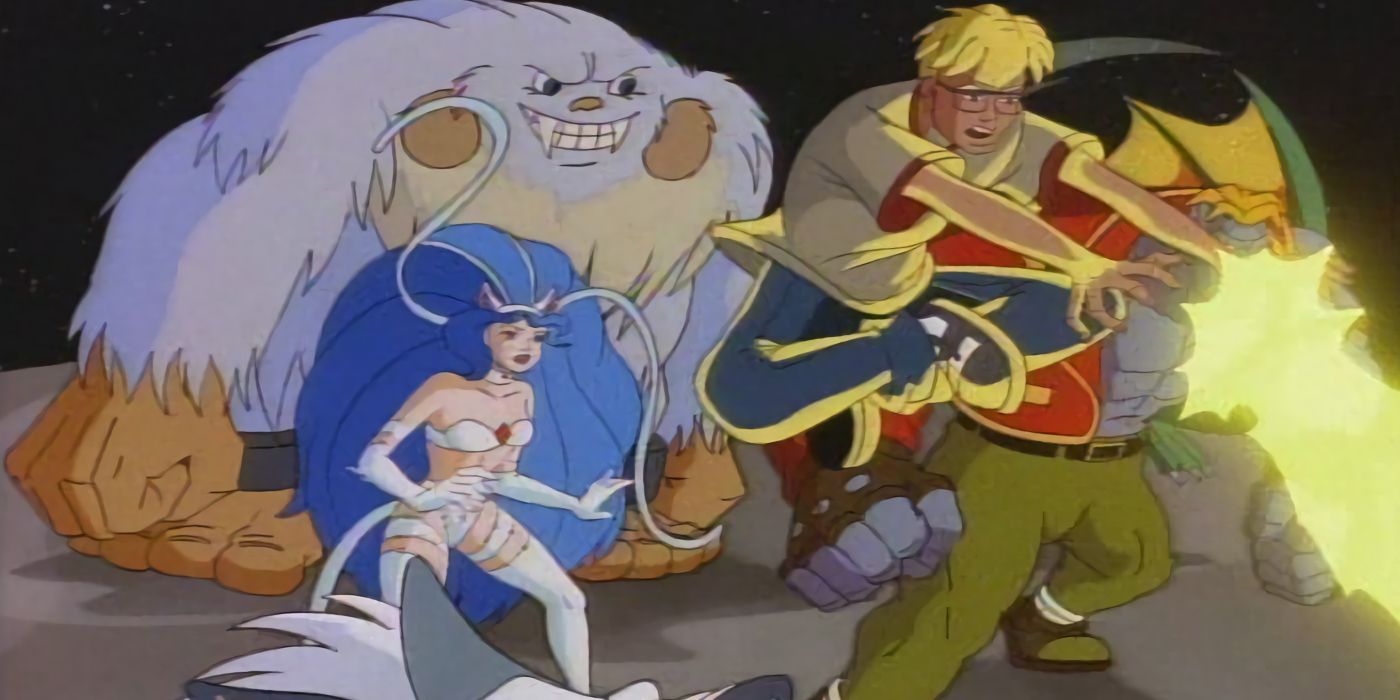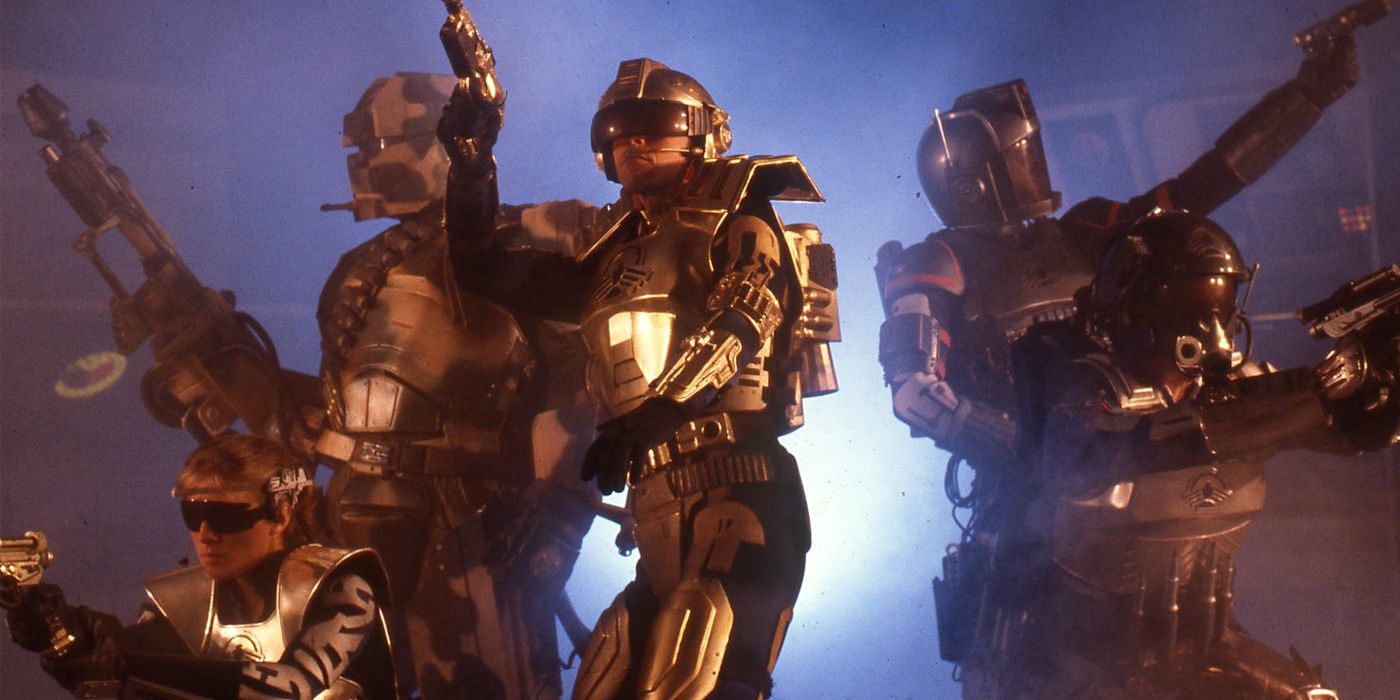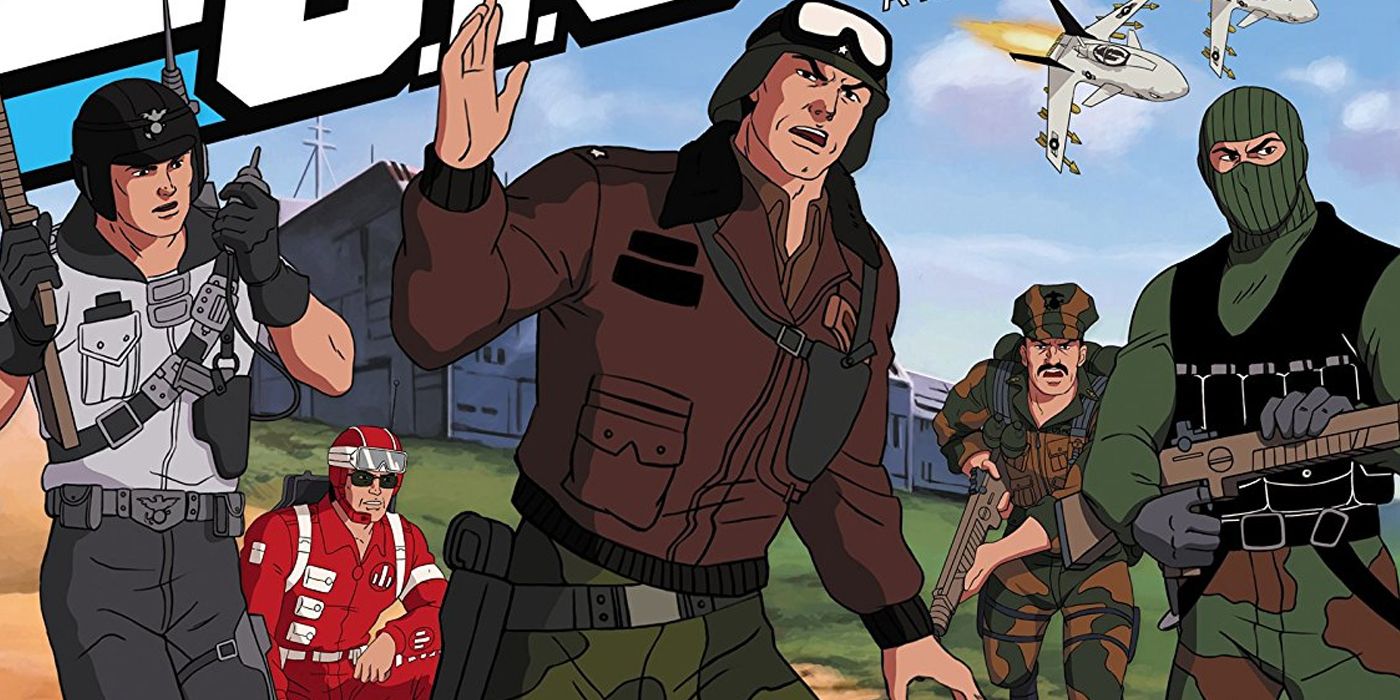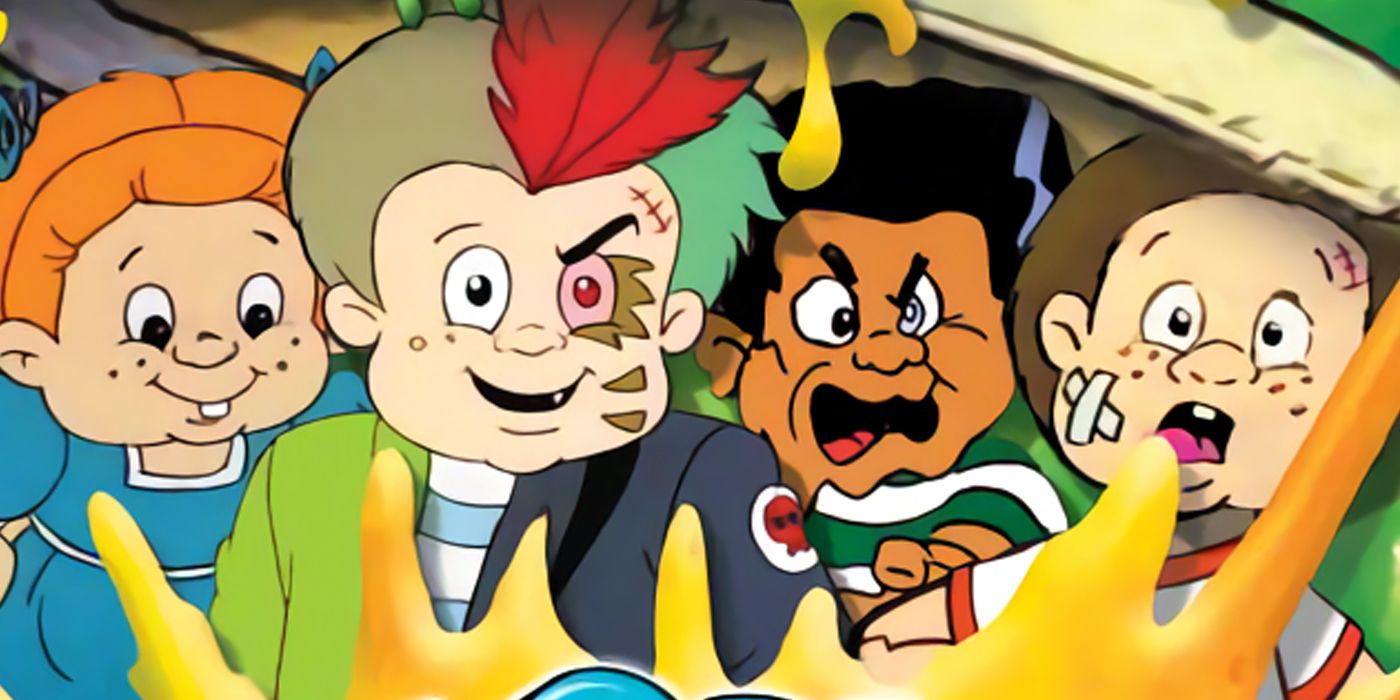For decades, generations of kids have spent a decent chunk of their childhood in front of the TV. While Scooby-Doo's zany mysteries and Spider-Man's web-slinging adventures might seem unimportant, cartoons and live-action kids shows are snapshots of the times they were created. Like any work of art, TV shows are products of their time. While shows reflect values and ideas that were widely accepted when they first aired, some of them feature once-acceptable content that could be found objectionable by today's standards.
To be sure, each of these shows was a cherished part of someone's childhood, and some are widely recognized as pinnacles in TV history. However, as censorship guidelines and cultural norms have evolved, many aspects of these great shows have now fallen out of favor. As a result, many beloved children's classics wouldn't fly if they were made today.
Updated on December 18th, 2022 by Chelsea Steele: Back in the day, kids' shows were very different from what they are now. Many series weren't afraid to push the limits on what they showed young audiences, and humor was often much darker than it is nowadays. Many of the classic kids' shows fans know and love would have never been approved today, and if something like them were to be released, many parents would be shocked and outraged. Though this list has already covered many beloved but outdated classics, it's been updated with even more titles that just wouldn't fly as a modern series.
20 Tom & Jerry Has A Lot Of Cartoon Violence That Some Might Find Disturbing
It doesn't get much more classic than Tom and Jerry. This beloved cartoon series has entertained generations of kids over the decades, and it's still enjoyed by families today. However, today's Tom and Jerry is pretty tame compared to the old-school version of the show.
The original series is much more shocking with its cartoon antics, taking the violence to a disturbing level at times. On top of that, like many cartoons of the time, the series threw in a lot of adult jokes that definitely wouldn't get past censors these days. While it's still an overall wholesome series, Tom and Jerry would never fly as a modern-day cartoon.
19 The Powerpuff Girls Took Violence To The Next Level
There's no denying that The Powerpuff Girls is one of the greatest cartoon series ever released. However, there's no way something like it would ever come out nowadays. The series is yet another example of cartoon violence that definitely wouldn't get greenlit for modern audiences.
Though it stars three cute little girls, this kids' cartoon is surprisingly packed with a lot of shocking violence that borderlines gore at times. Not only that but just like many other cartoons of the time, The Powerpuff Girls is filled with all sorts of adult jokes and innuendos that likely wouldn't make it past production if done today.
18 Rocko's Modern Life Feels Too Mature For Kids
It's no secret that Nickelodeon has had its fair share of adult humor, including some shows that almost seem too adult to be showing kids. Among these titles is Rocko's Modern Life, an old-school Nicktoon featuring the life and times of a wallaby named Rocko.
The show focuses on Rocko's daily struggles, and it often takes the story to some pretty adult places that most kids wouldn't be able to understand. The series also has a lot of raunchy humor that may not be appropriate for the target audience, and definitely wouldn't make the cut anymore.
17 Hey Arnold Gets Surprisingly Deep For A Kids' Show
Hey Arnold is one of the most beloved kids' shows to come out of the '90s, and it even still has a strong fandom decades later. But despite its immense popularity, this cartoon classic would never make it in a modern setting.
Though the series is family-friendly and perfect for all ages to enjoy, it's always gotten surprisingly deep. Over the years, Hey Arnold has covered some very heavy subjects, including abuse, neglect, bullying, and poverty, just to name a few. Many deem these subjects far too dark for kids, so the series would never work nowadays.
16 Are You Afraid Of The Dark? Would Be Considered Too Scary Today
'90s kids all remember the classic Are You Afraid of the Dark? all too well. It was a series much like Goosebumps, featuring a new spooky story each episode, told by a group of kids who called themselves the Midnight Society.
Though looking back, the series is pretty cheesy and has lost a lot of its scare-factor, it managed to terrify just about every kid on the block during its run. Not to mention, it had one of the creepiest openings of all time that still manages to scare viewers today. As a result, Are You Afraid of the Dark? could never air nowadays, as it would be considered far too scary for kids.
15 The Ren & Stimpy Show Was Controversial Even When It Aired
In the 1990s, The Ren & Stimpy Show was a big part of Nickelodeon's early success. Created by John Kricfalusi as one of the original "Nicktoons," the show starred Ren, a perpetually on-edge Chihuahua, and Stimpy, an agreeable-but-dumb cat. After premiering in 1991, Ren & Stimpy ran for 52 episodes over six seasons and became a cult classic thanks to its inventive animation and over-the-top gross-out humor.
Even in its heyday, Ren & Stimpy courted controversy and pushed the boundaries of what could be shown on a kids' TV channel. Thanks to its grotesque anatomical cutaways, violent outbursts, endless double entendres, and dark humor, the show likely wouldn't last too long in today's more sensitive media climate.
14 Mighty Morphin' Power Rangers Was Censored Due To Violence In 2010
By combining action scenes from Japanese tokusatsu shows with kid-friendly high school drama, Saban Entertainment stitched together Mighty Morphin' Power Rangers. Shortly after that show's 1993 debut, Saban's patchwork masterpiece transformed into an overnight global juggernaut.
While Disney owned the franchise, an edited "re-version" of Mighty Morphin' Power Rangers aired in 2010. Although the series always drew some criticism for its martial arts violence, the "re-version" went out of its way to edit out any potentially objectionable content. Many of the kicks and punches in the show were edited over with Batman '66-esque graphics like "Biff!," "Bam!," and "Pow!". This experiment ultimately proved unpopular and ended after 32 episodes.
13 X-Men: The Animated Series Pushed The Limits With Its Fight Scenes
X-Men: The Animated Series introduced a generation of kids to Marvel's mightiest mutants throughout the 1990s. Over 76 episodes, the cartoon faithfully adapted the X-Men's adventures in a modernized, kid-friendly format. Throughout its run, X-Men had an infamously hard time passing network censors. Thanks to public concern about violence in cartoons, X-Men's action scenes were usually sanitized and avoided any real consequences.
Nevertheless, the series often pushed the limits on what most kids' shows were allowed to show as far as violence or fight scenes. Compared to many other cartoons of the time, X-Men was surprisingly violent. As a result, X-Men's gun-toting heroes and mildly suggestive content would likely raise more than a few eyebrows today.
12 Johnny Bravo's Entire Premise Would Be Controversial Today
One of Cartoon Network's first original animated series was Johnny Bravo. In this Hanna-Barbera cartoon, the show's muscular-but-hapless lead tried in vain to find a date through a series of bizarre adventures, sometimes with guest stars from other Hanna-Barbera cartoons.
The fledgling Cartoon Network was pretty lenient about the content in Johnny Bravo, allowing the series to get away with some pretty shocking things. While the show was retooled a few times, Bravo's persistent pursuit of the opposite gender was a foundational aspect of the cartoon. Even though Bravo's constant rejection was a big part of the show's humor, his unwanted advances might veer too close to harassment for many modern viewers.
11 Courage The Cowardly Dog Would Have To Be Toned Down For Modern Audiences
In the '90s and early 2000s, kid-friendly horror shows were all the rage. Courage the Cowardly Dog continued the trend with its debut on Cartoon Network in 1999. In this iconic series, the titular cowardly dog tried to save his elderly owners, Muriel and Eustace, from all kinds of terrifying supernatural creatures.
While Courage was never a lightning rod for controversy, some of its scariest moments left young viewers with nightmares for weeks. Even though the show was ostensibly a comedy, it featured flesh-eating zombies, domestic abuse, lifeless bodies, and a mattress demon heavily inspired by The Exorcist. Courage's mixed-media jump scares might have left an impression on viewers in the early 2000s, but they would likely have to be toned down for today's younger viewers.
10 Mortal Kombat: Defenders Of The Realm Is Based On A Controversial Game Series
Mortal Kombat was the center of one of the biggest cultural firestorms of the 1990s, igniting a global debate about violence in video games that continues today. While a controversial property like that might not seem like an ideal candidate for a Saturday morning cartoon, Film Roman productions created Mortal Kombat: Defenders of the Realm for the USA Network in 1996.
Like most of that era's other video game cartoons, Mortal Kombat featured a heavily sanitized take on the game's general mythology. Instead of fighting each other, the show's Kombatants had bloodless battles with generic Tarkatan monsters and robots for 13 episodes. While those changes alienated most of the franchise's fan base, nothing could prepare modern viewers for a series based on such violent, controversial source material.
9 Celebrity Deathmatch Would Be Far Too Violent To Air Today
Throughout the 1990s, MTV's animated shows pioneered the kind of adult-oriented animation that defines Adult Swim today. Unlike that late-night block, MTV's cartoons aired irregularly throughout the day and night, when channel-surfing kids could stumble across them. Thus, many children were exposed to Celebrity Deathmatch, a claymation series where celebrities beat each other to a pulp.
Under the watchful eyes of hosts/announcers Johnny Gomez and Nick Diamond, caricatures of that era's celebrities fought to the death with cruel, unusual, and often impossible forms of punishment. With its mix of Mortal Kombat-esque ultra-violence, cartoon logic, and celebrity culture, the darkly comedic Deathmatch was a perfect product of 1990s cynicism. However, the series would be considered far too much to show on primetime television nowadays.
8 The Ripping Friends Had The Same Vulgar Humor As Its Predecessor
The Ripping Friends was John K's next series after Ren & Stimpy. It starred Rip, Chunk, Crag, and Slab, a group of superhero brothers who were described as "the world's manliest men." Functionally, the show operated like a more extreme version of The Tick, dosed with Ren & Stimpy's over-the-top humor.
Though only a mere 13 episodes long, the series featured the same kind of grotesque, boundary-pushing content that Ren & Stimpy was known for. While it was never popular enough to fuel any kind of controversy, it found a more fitting home when it was rebroadcast on Adult Swim's late-night block in 2002.
7 Dragon Ball Z Got Away With Showing An Extreme Amount Of Violence
From the late 1990s to the mid-2000s, Toonami, Cartoon Network's action-centric programming block, introduced a new generation of American viewers to Japanese anime. While Toonami's shows were Westernized and edited for content, the spirit of shows like Dragon Ball Z was largely left intact.
Since each episode of the series seemed to feature over 9000 punches, DBZ's absurd level of violence always received a little criticism, even in its edited form. While DBZ was generally acceptable for after-school viewing in the 1990s, Dragon Ball Z Kai, a remastering of the earlier series, has been relegated to late-night viewing blocks since 2014.
6 Batman: The Animated Series Depicted More Realistic Violence Than Later Titles
Before it became an icon of American animation, Batman: The Animated Series helped rewrite the rules of kids' TV. Its mix of film noir, art deco style, and classic Batman action set a new standard for superhero cartoons over four seasons on Fox and the WB. It also featured far more realistic violence than anything that had previously been seen on kids' TV.
While the show faced a moderate amount of censorship, it featured full-contact fights, suggestive content, and, most notably, realistic guns. Since BTAS first aired, censors have become more sensitive about gunplay in cartoons. Later entries in the DC Animated Universe and later Batman series like Beware The Batman featured less realistic laser firearms.
5 Looney Tunes Is A Product Of Its Time
For the better part of a century, Looney Tunes has entertained generations of kids with some of the most famous cartoon characters of all time. While Bugs Bunny, Daffy Duck, and the other Warner Brothers characters have become international icons, some of their antics simply don't sit comfortably in today's world.
Except for modern revivals like Space Jam, most of the classic Looney Tunes were created between 1930 and 1969. While they were released unquestioned a half-century ago, several Looney Tunes shorts have violence or unfortunate ethnic stereotypes that wouldn't be shown anywhere in a modern setting.
4 Darkstalkers Is Likely Too Dark For Today's Standards
While it paled in comparison to blockbuster video game franchises like Mortal Kombat and Street Fighter, Capcom's Darkstalkers: The Night Warriors kicked off another successful fighting game franchise in the mid-1990s. Most of the fighters in the Darkstalkers franchise were based on classic monsters and supernatural creatures like vampires and zombies.
Despite those horrific origins, Graz Entertainment gave the monsters a showcase in DarkStalkers: The Animated Series, which ran for one season. Even though the cartoon offered a heavily sanitized take on the franchise, most of the Darkstalkers fighters would have a hard time finding a place in today's children's programming without major alternations, from their costumes to their overall characters.
3 Captain Power & The Soldiers Of The Future Had Some Questionable Themes
Captain Power and the Soldiers of the Future made an ambitious attempt to mix live-action drama with ground-breaking special effects and "interactive television." In this post-apocalyptic syndicated series, Captain Power led a human resistance against Lord Dread and his machines. The show also spawned a somewhat infamous toy line where light guns could interact with videotapes and new episodes of the show on TV.
While the show was targeted at kids, Captain Power tried to satisfy older viewers with a surprising number of adult themes and death-filled storylines. Today, those same criticisms would arise again, and there would likely be concerns about the toys encouraging childhood gunplay.
2 G.I. Joe: A Real American Hero Had Problems Even In The Height Of Its Popularity
Starting in 1982, G.I. Joe: A Real American Hero spectacularly updated the classic Hasbro storyline for the booming 1980s. That wildly successful toy line eventually spawned a syndicated Marvel Productions cartoon that ran irregularly from 1983 to 1986 and a DiC Entertainment follow-up show that ran from 1989 to 1992. With a humongous cast of characters and toyetic vehicles, the show was a massive hit with kids who were enthralled by the Joes' explosive battles against Cobra, a hapless group of would-be tyrants.
Even in its heyday, G.I. Joe drew the ire of parents for its overt commercialization, excessive merchandising, and the franchise's ethnic stereotypes. In today's hyper-charged atmosphere, G.I. Joe's proximity to the military-industrial complex would likely ruffle just as many feathers.
1 The Garbage Pail Kids Cartoon Ended Before It Could Even Begin
If Garbage Pail Kids was too offensive for TV in the 1980s, there's practically no way the cartoon would be allowed on the air today. Created by the Topps Company, the Garbage Pail Kids trading cards were a gross-out, pun-filled parody of that era's Cabbage Patch Kids dolls. Though the cards were a lightning rod for controversy, the Garbage Pail Kids were popular enough to warrant a movie and a cartoon series.
While it was scheduled to air as part of CBS' Saturday morning cartoon lineup, Garbage Pail Kids was pulled from the American broadcaster's schedule before it debuted. During the significant ad campaign leading up to the show's premiere, the cartoon's potentially objectionable and vulgar content drew protests from all over, and it didn't last long.

